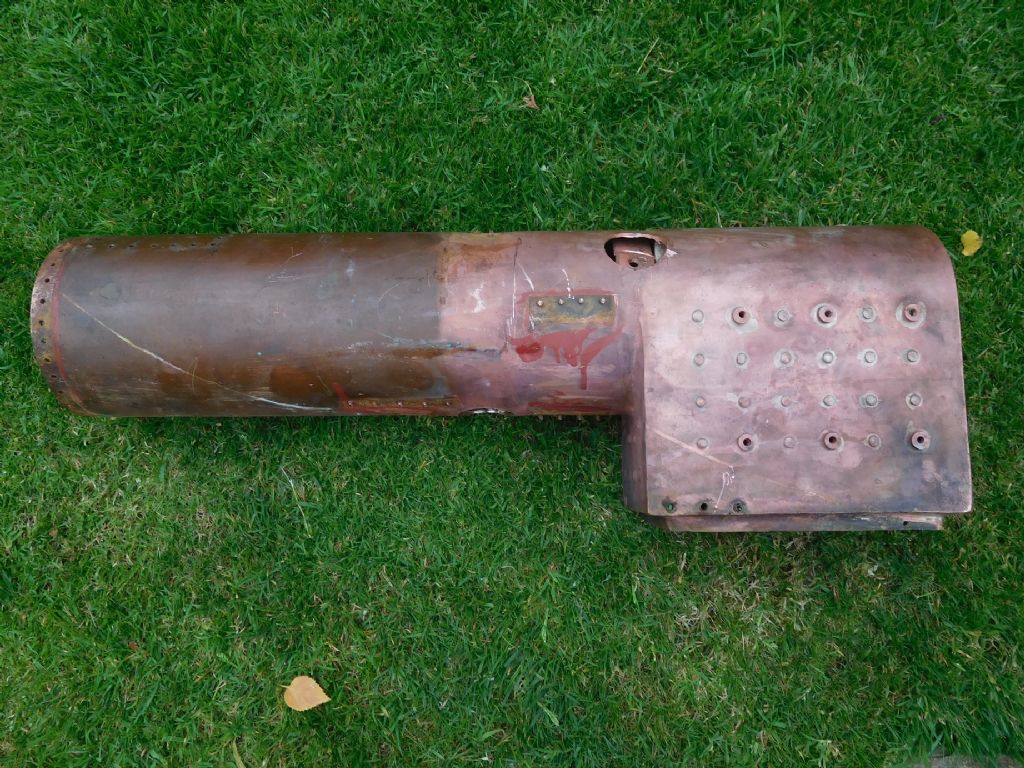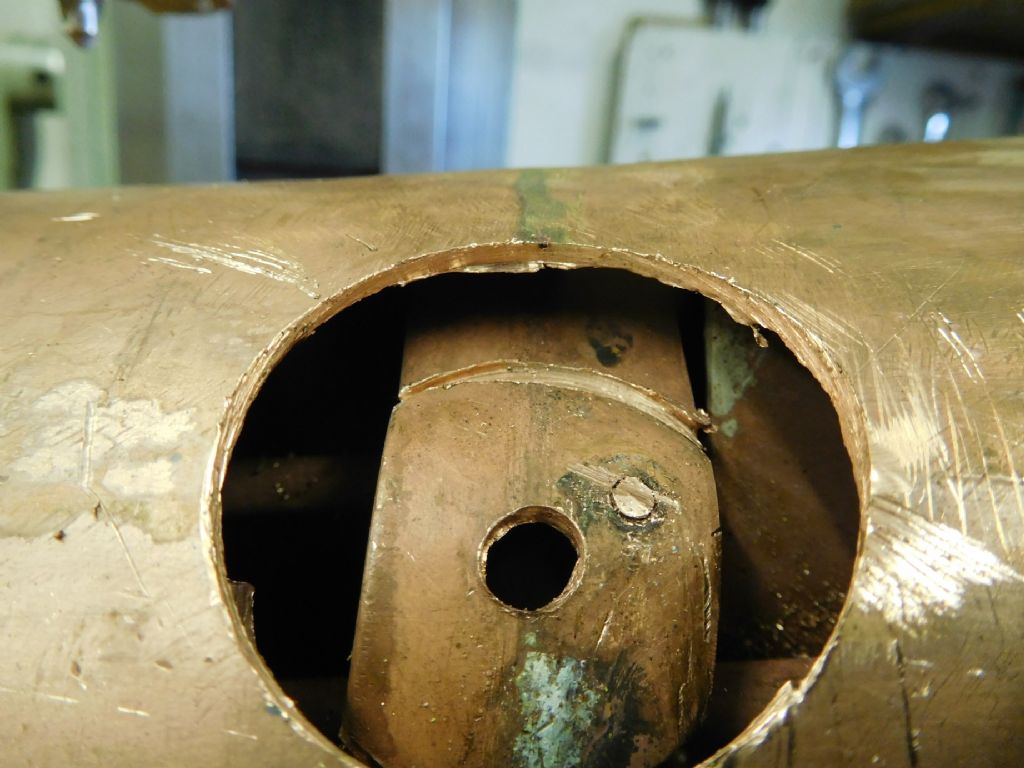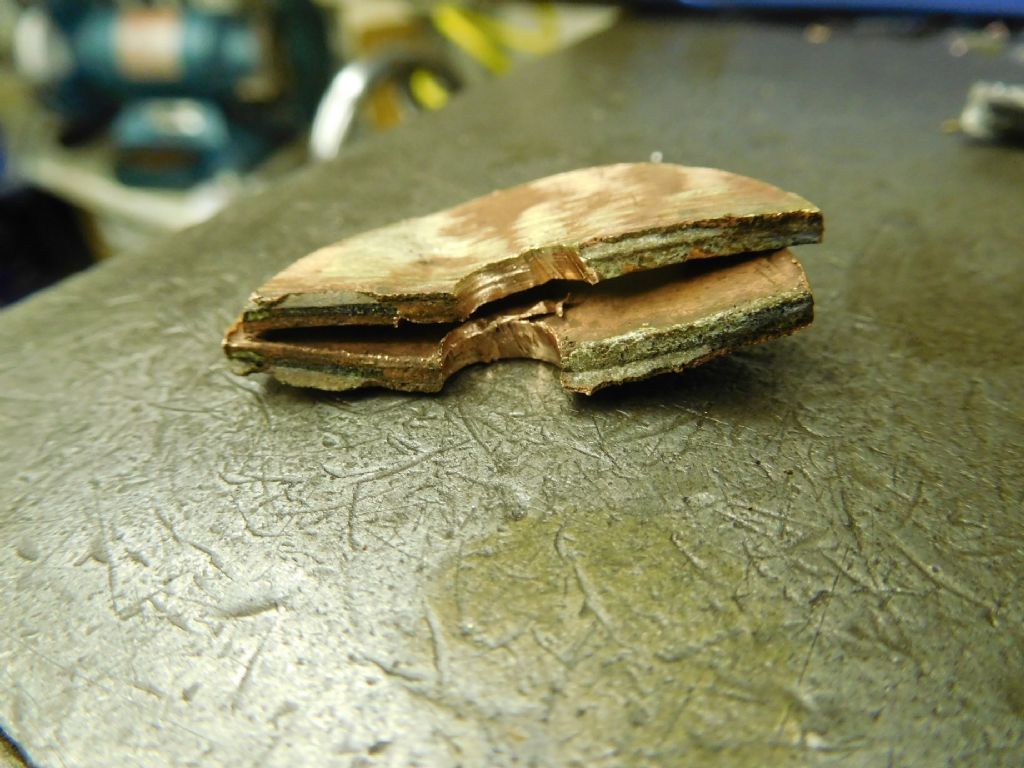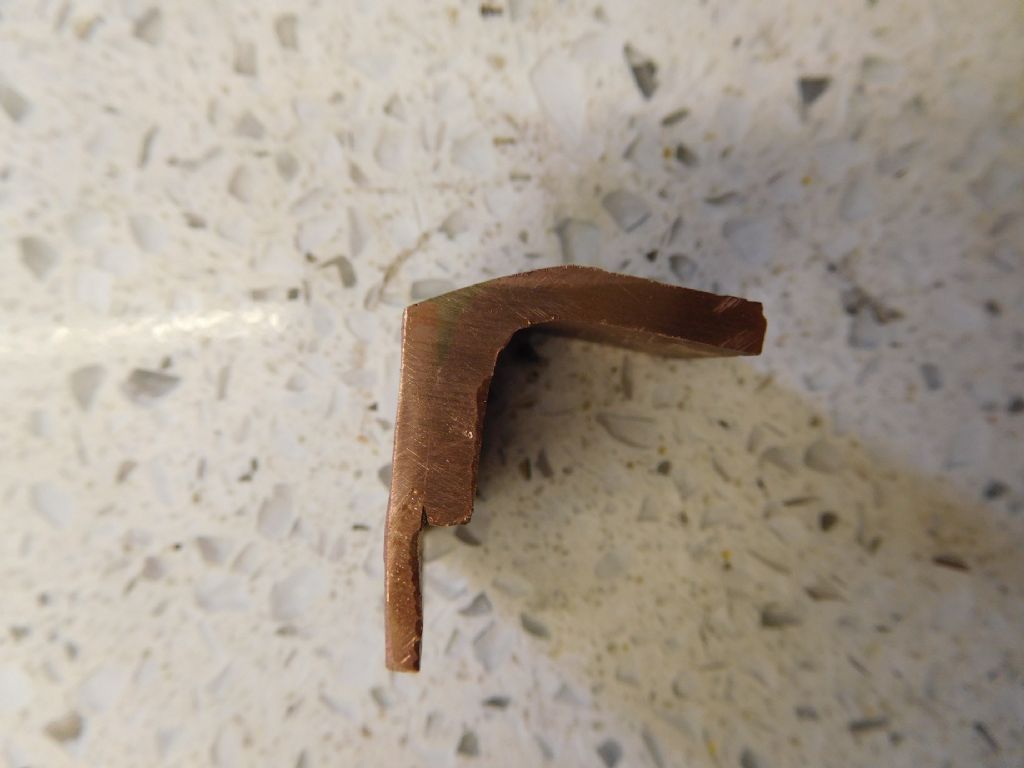Some years ago I bought a part-built 2" scale Fowler BB1 ploughing engine to John Haining's design from the estate of a deceased model engineer. He'd bought it from somebody else. The workmanship wasn't brilliant, but the boiler had been commercially built in about 1975 and came with a certificate, saying it had withstood 175psi without leakage or distortion. The boiler itself looked lovely, so I was quite happy with the purchase. It was always going to be a long-term project, so I was in no hurry to get on with it. (Ignore the bloody great hole in it in the picture below!)

After about twenty years, I thought I'd get the boiler certificated. So before taking it to the club, I pumped it up. Only I couldn't pump it up. As soon as the water level rose far enough, it poured out of the firebox from around all the tubes, none of which were actually soldered to the firebox tubeplate. So for the builder to claim it had hadn't leaked was an out-and-out lie. But by now it was far too late to complain – even if he was still alive to complain to.
I had a conversation with our chief boiler tester, and he suggested that I expand the tubes and then run round them with Comsol. So I did that, and pumped it up again.
There were a lot of further leaks from stays (screwed and silver-soldered) so I applied more Comsol. A couple of days ago I pumped it up again, and it withstood 150psi with only some very slight weeps from the odd stay. One or two responded to a bit of gentle caulking with a hammer and punch. Then a small leak manifested itself in what was apparently a plain section of boiler barrel, just in front of the firebox. Curious… I lightly tapped the area with a hammer and the leak became a torrent. I filed the area and a brass colour became exposed. The barrel had been brazed to the firebox, and then smoothed over before copper-plating the boiler to disguise it.
That was it. The boiler was scrap. I got out a hole saw and drilled out the area of leakage. When I got deep enough, a semicircular section of barrel became dislodged, leaving its mating half still riveted to an internal piston ring joint. I couldn't finish drilling through the piston ring because there was no fastening of the piston ring to the boiler other than where it was riveted in places to the firebox and it was pushing away from the hole saw. All that had been holding the barrel to the firebox was a manky brazed butt joint, which had locally come apart with the stresses of hole-sawing.
That piston ring was only serving as a location for brazing the two halves together!

These are the two sections of barrel/firebox wrapper removed by hole-sawing – and the braze had given way during the operation.

The whole thing had been a potential bomb. The scary thing is that if the joint had been only a few percent better than it had been, it wouldn't have leaked and I would have been blissfully ignorant of the potential. And it's a ploughing engine – it's not just pressure stresses on the boiler, but driving it over rough ground imparts who knows what additional loads on the joint?
Further investigation showed that the barrel was only 2mm thick – it should have been at least 3/32" (13SWG) and if I had been making the boiler it would have been at least 3mm thick. The backhead had been brazed in place too – and the section through it shows that the penetration of the braze wasn't all that good. And what kind of brazing rod was it anyway? How long would it have taken to de-zincify?

There were other concerns as well, such as very thin fire tubes – they'd have worn through very quickly – and the internal pad under the cylinders was not in the right place (or too small) so the front ring of cylinder bolts were only tapped into 2mm of copper.
I'm not prepared to disclose the name of the maker. Technically I can't prove anything because there is no marking on the boiler or certificate. Suffice it to say that he was later bankrupted. And I hope he had a really miserable time of it.
At least there's no chance of it being used – it's well cut now and I shall weigh it in for scrap.
Moral: Take care when dealing with older boilers built by unknown "professionals", and look at them very carefully before parting with your money. If a boiler has been copper-plated, walk away from it. It's hiding something. And always, always test a boiler you wish to use.
Keith Hale.








